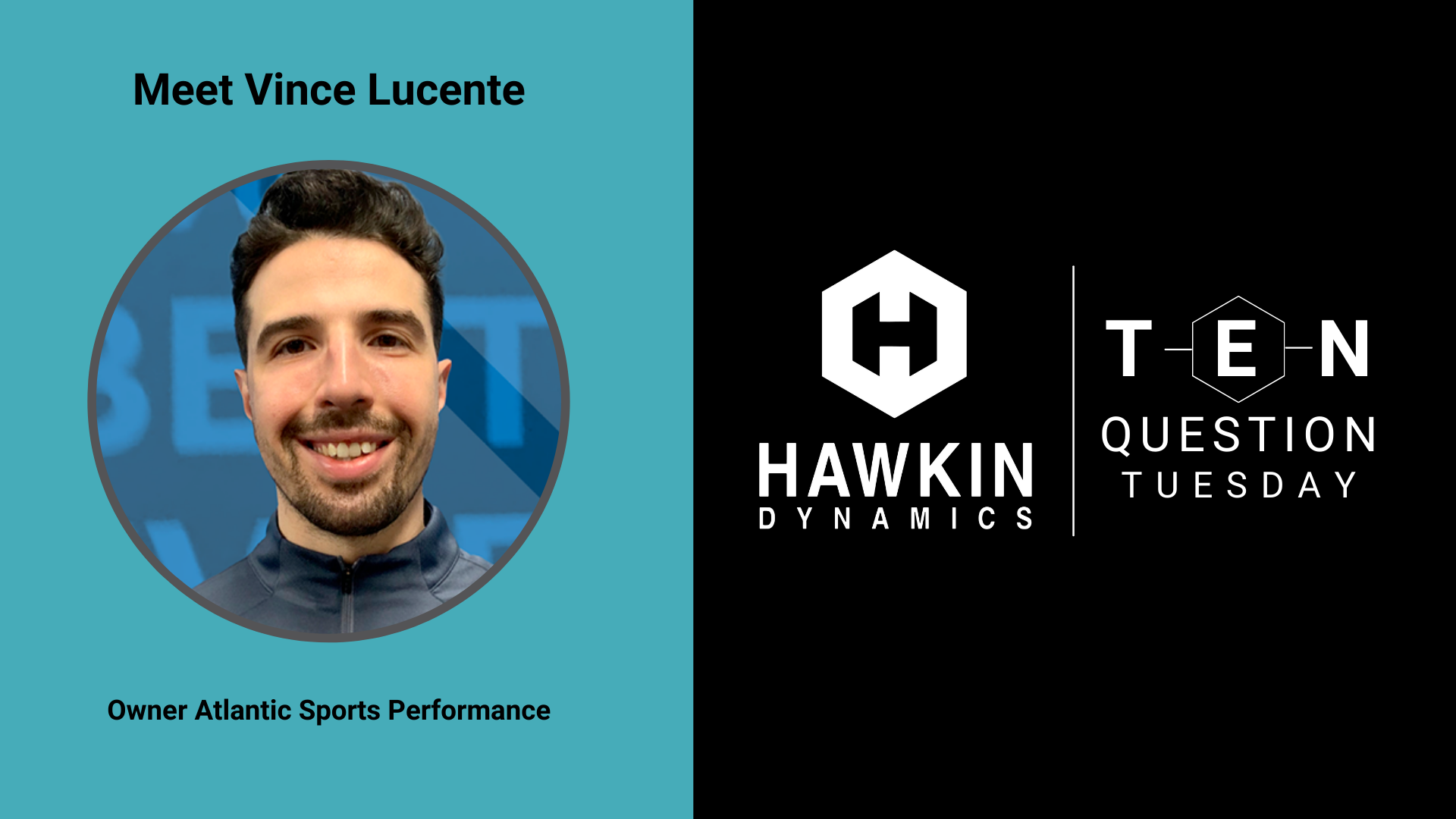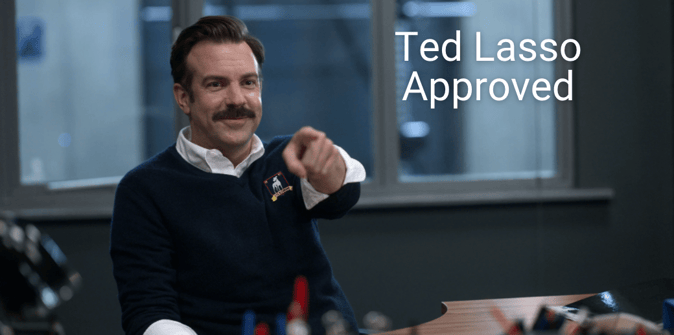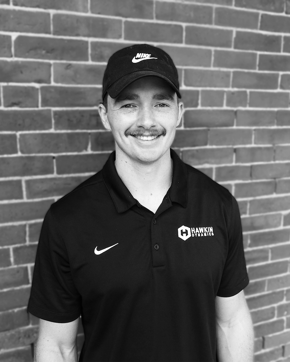What is 10 Question Tuesday?
Ten Question Tuesday (TQT) is where we interview top practitioners, coaches, and people to pick their brains, learn from their experiences, and get it all on paper. This is Ten Question Tuesday brought to you by Hawkin Dynamics.
Questions in this TQT:
-
Introduction
-
Private Sector vs. College
-
Choosing HD over other force plate companies
-
Canadian Strength & Conditioning Differences
-
The Future of Sport Science
-
Return To Play
-
Selling Force Plates as a Service
-
Same Day Force-Time Curve Changes
-
Keep It Simple!
-
Adopting New Technology
The lowest entry cost in for force plates is at Hawkin Dynamics. Learn more here.
Who is Vince Lucente?
Vince Lucente is the founder and owner of Atlantic Sports Performance (ASP). ASP serves it's clients at two locations in Nova Scotia - ASP Dartmouth and ASP Bridgewater. ASP was an early adopter of Hawkin Dynamics force plates. Vince shares invaluable insight on how to implement force plates and other technology into the private sector.

Question 1: Intro
Hawkin Dynamics: Hi Vince! Please share with us a little bit about your background.
Vince: I am the Founder of Atlantic Sports Performance, leading two facilities in the Province of Nova Scotia, Canada. In 11 years as a Strength and Conditioning Professional, I have worked in a diverse array of environments, from the private sector to leading Varsity Athletic departments at the collegiate level. Throughout my career, I have remained passionate about understanding how to better serve and lead through a human-first lens, prioritizing practical and efficient data-informed initiatives to better navigate the complexities and demands of the modern athlete with agility.
Question 2: Private Sector vs. College
Hawkin Dynamics: Contrasting to your time in college athletics, what is the biggest difference now in the private sector?
Vince: I was grateful to learn this lesson very early in my career from my mentor, Matt Nichol; in the private sector, your athletes are personally committing a financial investment (i.e. skin in the game) in your coaching and leadership to be a solutions-provider, whereas in the team sport setting the circumstance are much different. In the collegiate setting, you are learning to be a chameleon of sorts in your efforts daily, adapting to the “chaotic” and unpredictable nature of schedules, logistics, team sport coaching staff, and other support staff.
I was extremely fortunate to have learned the invaluable opportunity that agile frameworks and applied sport science provide to the practitioner in managing 12 varsity teams at Seneca College (Toronto, Canada), all with diverse training histories across individual athletes, differing demands of team sport stakeholders and navigating the academic and competitive schedules from a stress-consolidation perspective; facilitating the adoption of an Interdisciplinary Team (IDT) and to support decision-making through systems was critical.
In the private sector, similar rules apply that have transferred significantly as an entrepreneur, although there is significantly more freedom and time to foster strong, tight-knit relationships and explore creatively that you may not have a similar opportunity to express in the collegiate setting due to many factors including budget, time and various other restrictions that may present themselves.
Question 3: Choosing HD
Hawkin Dynamics: Why did you choose Hawkin Dynamics force plates over other jump devices on the market? Have you used other devices?
Vince: I chose the HD force plates because I was very familiar with the company, and CEO Ben Watson from years past early on in my coaching career in Ontario. Also just seeing the plates in action at performance combines, the overall portability of the plates, design, and user-friendliness during that time led to me prioritizing HD plates as an investment as early as I could when I founded Atlantic Sports Performance!
In the past, I have used JustJump Mats, PUSH 2.0, Output Sports, and gFlight!
Question 4: Canadian S&C
Hawkin Dynamics: You’re from Canada, where do you see the biggest difference in the Strength & Conditioning community there, when compared to the United States?
Vince: Firstly, the age of the field in Canada is significantly younger than that in the US. Here S&C is still not firmly a full-time role within college and university athletics; not to mention in professional settings in Canada for many sports.
With this being said, there is certainly a wave of extremely talented professionals in the Canadian Community, and with the inception of the Canadian Strength and Conditioning Association (CSCA) only within its first 2-years. There is an early and significant emphasis emerging on career sustainability, quality of life, professional ethics, and data-informed education for new professionals entering the space here. I strongly believe that when more full-time opportunities present themselves in the team sport setting, the foundations laid above will set a tone into establishing what this role will look like here in Canada!
In the private sector, there are going to be more revenue-generating opportunities for professionals and this is going to significantly expand the impact and scale of new professionals in the space!
Question 5: The Future of Sport Science
Hawkin Dynamics: Where do you see the space of sport science going in the next 3, 5, and 10 years?
Vince: This is a tough question because it seems as though more disruptive footprints are laid annually in this realm with new and innovative tech influences, but I firmly believe that sleep science and comprehensive lab analysis of blood (and stool) panels will be more mainstream. From what I am learning now about individualization based on the above at many levels, it is an exciting area that I believe will come to the forefront of performance!
I foresee interdisciplinary teams having a more significant role and seat at the table in stakeholder meetings at the professional level, and making their way to being a private sector priority in 5-years.
Also, I believe that motor learning professionals will make their way into the fold - exciting insights coming in from that realm as of late!
Question 6: Return To Play
Hawkin Dynamics: Briefly cover your return to play (RTP) process and how you incorporate the force plates to obtain object measures.
Vince: Our RTP process is simple but robust. Depending on the nature of the injury that is experienced by the athlete, we want to identify pain provocation or abhorrent signatures through 3 conditions:
(1) Static: Yielding and/or overcoming isometrics at varying degrees outside of pain
(2) Slow dynamic: Controlled movements that may provoke discomfort; examples include cadence bodyweight squat, push up, shoulder taps
(3) High velocity/impact: When the athlete is prepared in process, through force absorption, production, or blended; examples include: varying height drop landings, squat and countermovement jumps, plyo push-ups, lateral bounds, kneeling fall catches (upper body).
Assessing function and pain provocation at each condition helps us to identify athlete confidence and readiness for each respective level of return-to-perform conditions. If an athlete cannot complete level 2 tasks, we continue at level 1 until we re-test pain-free performance at level 2, and so on and so forth.
Unilateral lower-body assessments are a priority in the event of lower limb injury RTP to identify motor skill discrepancies between limbs and specifically braking phase asymmetries between.
We are currently experimenting with a case study of load-velocity profiling of the countermovement jump at 3 separate load conditions to assess discrepancies in force-time signature, as well as relative net braking impulse and its constituents (i.e avg. force, RFD, and peak force) in baseline assessments as a means to identify risk and manage eccentric strength ability and capacity through individualized program design to protect from the potential risk of injury.
Question 7: Selling Force Plates As Service
Hawkin Dynamics: As well as being an elite performance coach, you are also an entrepreneur. How do you use the force plates as a selling point for your private gym business?
Vince: Athletes and parents love that we use this tool as a means of objectively providing a solution to their performance puzzle! We use the plates as a means of a visual representation of performance during our onboarding process, with education of the purpose behind key metrics dependent on the challenges that the athlete or parent expresses in the intake period!
Question 8: Same Day F-T Changes
Hawkin Dynamics: About a year ago, we had a training call and you discussed a way that you use the force plates that is very unique. Briefly cover what we talked about a year ago and testing an athlete before training to change the difference in the force-time curve, and then testing again in the same session.
Vince: One particular area of interest that I have been addressing has been in guiding the daily in-season direction of our training prescriptions through an ‘on-the-fly’ analysis of each athlete’s force-time signature of the CMJ Akimbo.
Following the warm-up, and once an athlete has performed 3 CMJs, we provide an option of the intention of the way the KPI lift is performed based on the real-time analysis of each phase respectively.
Although the exercise selection remains the same in our planning, the intent shifts based on the influence in determining if the athlete requires an eccentric, isometric or concentric emphasis.
For example, an athlete that shows an increased braking phase duration in their CMJ relative to normal would perform lower load (dependent on readiness metrics) drop-catch trap bar deadlifts to amplify the rate of force development of the braking phase; an athlete showing an abhorrent concentric phase relative to their norm would provide the trap bar deadlift from the floor to prioritize the concentric contraction.
Velocity-specific recommendations would auto-regulate based on SD from mean of readiness metrics we incorporate as part of our decision-making tree.
Question 9: Keep It Simple!
Hawkin Dynamics: One of the biggest challenges we hear from coaches in the private space is presenting the data back to parents in an understandable way. How have you digested the information for parents/coaches of the youth athletes?
Vince: Keep it simple! Some parents and coaches like to know a little more and have had a background in kinesiology, others have no idea!
First things first, in my opinion, never use biomechanical, anatomical or any professional jargon at any time.
I’ve lived by the tenet that, “if you cannot explain it to a five-year-old” or “write your explanation on a napkin at a restaurant”, it’s too complex.
It is important to find the simplest way to tie the metric to the athlete and sport based on their ‘ONE THING’ or activator; ie. the reason they are here in the first place.
Practicing how you would communicate the metric set you have specific to hockey, soccer and baseball respectively is critical. You need to first understand the sport, as it makes your language much easier to explain to the Coach, parent and child.
Question 10: Adopting New Tech
Hawkin Dynamics: What are the biggest barriers to the adoption of new technology?
Vince: Technology can be extremely overwhelming to the practitioner, and there are SO many metrics available that it can create paralysis by over-analysis.
With this being said, you have to be (1) extremely patient and (2) confident in what you know and are learning at this moment in order to bring tech into the fold of your environment.
Logistics and time are critical, and when using tech, you need to first ensure that prior to your investment, ask yourself, “in order to add ‘x’, how do we make it fit into our session time?” as well as, “how can I include this into our Standard Operating Procedure (SOP)?”
Once you have created an SOP around incorporating tech into your environment, and it fits logistically and within the time constraints of your business model, jump in on the investment and test your athletes as often as you can!
When I look at when I first invested in the HD plates, I explored so much and learned along the way! What I did then and what I do now is a result of many, many iterations, learning to understand the metrics more sensitively, beginning to connect the dots between variables and training prescriptions/adaptations as the data came in over months and months of daily assessment!
That's A Wrap
That's all for this week's Ten Question Tuesday.

-2.png?width=156&height=60&name=Hawkin%20Logo%20(2)-2.png)
-1.png?width=155&height=60&name=WHITE.Horizontal_Logo.Transparent%20(3)-1.png)

